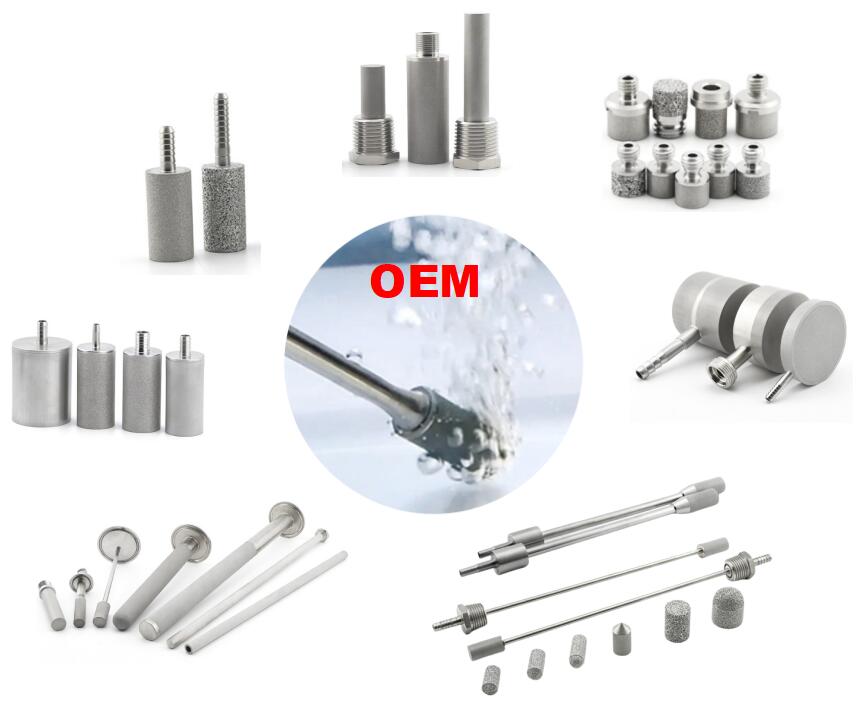-
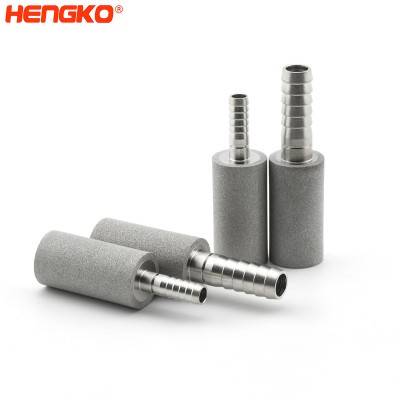
Diffusion Stone SFB04 Stainless Steel Aeration Stone- HENGKO
HENGKO diffusion stone for brewing made of high quanlity food grade 316L stainless steel that has the characteristics of practicality, health, corrosion resi...
View Detail -
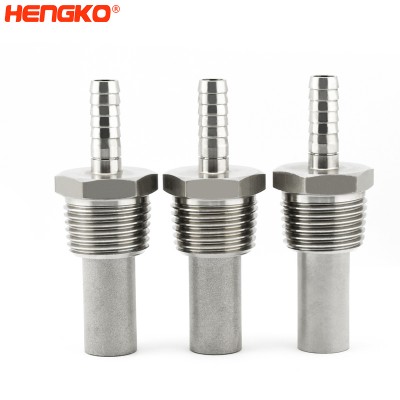
SFH01 inline oxygenation diffusion stone
This is a great option for putting oxygen into your wort as you transfer from the kettle or plate chiller into your fermentor. It comes with a 1/2" NPT and a...
View Detail -
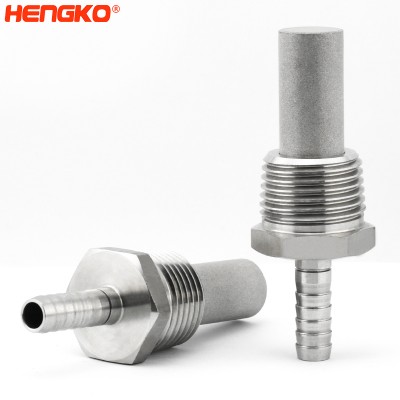
SFH02 inline diffusion stone
Inline diffusion Stone with 1/4" Hose Barb - 2 Micron. Made of 316L Stainless Steel. This is a great option for putting oxygen in to your wort as you transf...
View Detail -
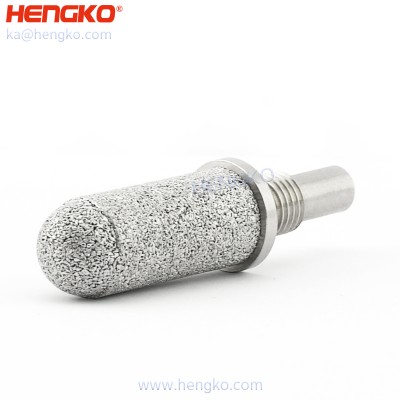
Sintered Metal Sparger of Stainless Steel Porous Sparger Types for Home Brewing Device
HENGKO sintered spargers introduce gases into liquids through thousands of tiny pores, creating bubbles far smaller and more numerous than with drilled pipe ...
View Detail -
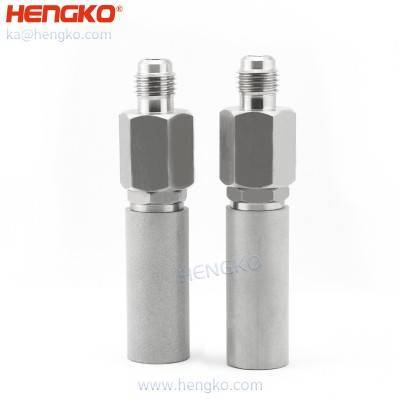
SFT11 1/4” MFL Diffusion Stone
316L Stainless steel 0.5 carbonation/diffusion stone with 1/4" flare threads Carbonate your beer just like the pros with this stainless steel Carbonating Sto...
View Detail -
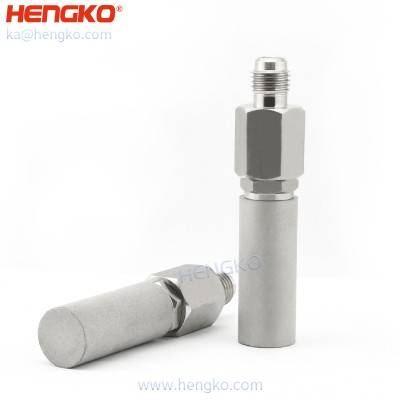
SFT12 1/4”MFL diffusion stone
Diffusion stone, also called carbonation stone, carbonating stone, or carb stone for short is usually used to carbonate beers or diffuse gas into beverages. ...
View Detail -
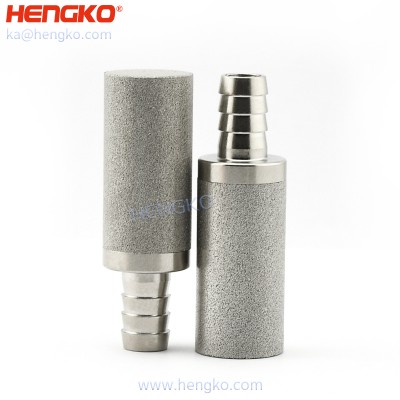
Stainless Steel Sparger 2 Micron Stainless Steel Carbonation Diffusion Stone for Bacter...
Introducing HENGKO's innovative sintered spargers - the ultimate solution for efficient gas-liquid contact in a variety of industries. Our spargers use thou...
View Detail -
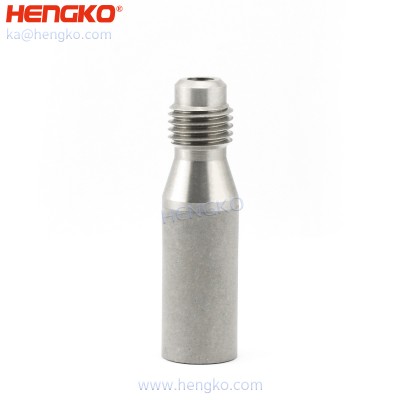
1/4″ Flare Thread Diffusion / Aeration/ Carbonating Stone 0.5/2.0 Micron Stainles...
Carbonate your beer in record time or aerate/oxygenate your wort like a pro with the 0.5 and 2 Micron Stainless Steel Diffusion Stone. The 0.5 and 2-micron ...
View Detail -
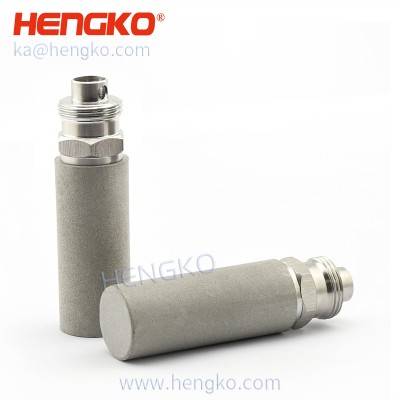
SFT01 SFT02 1/2″NPT X 1/4”bard inline 0.5um 2um carbonation oxygenation Diffusio...
Product Name Specification SFT01 D5/8''*H3'' 0.5um with Flare thread, M14*1.0 thread SFT02 D5/8''*H3'' 1um with Flare thread, M14*1...
View Detail -
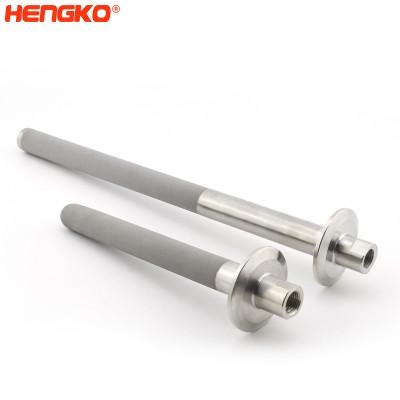
Installed Directly Porous Metal In-Line Sparger Tube Generate Small Bubbles
HENGKO sintered spargers introduce gases into liquids through thousands of tiny pores, creating bubbles far smaller and more numerous than with drilled pipe ...
View Detail -
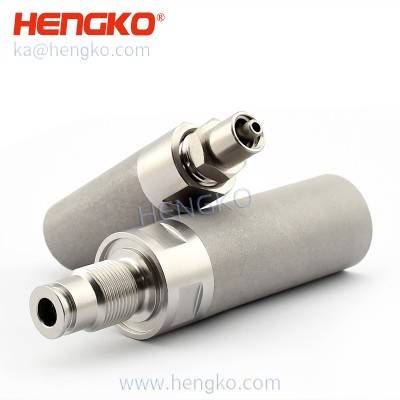
0.5, 2 Micron SFT01 SFT02 Homebrew Oxygenation Diffusion Stone Beer Carbonation Aeratio...
Product Name Specification SFT01 D5/8''*H3'' 0.5um with Flare thread, M14*1.0 thread SFT02 D5/8''*H3'' 1um with Flare thread, M14*1....
View Detail -

Sintered porous micron stainless steel spargers homebrew wine wort beer tools bar acces...
HENGKO sintered spargers introduce gases into liquids through thousands of tiny pores, creating bubbles far smaller and more numerous than with drilled pipe ...
View Detail -
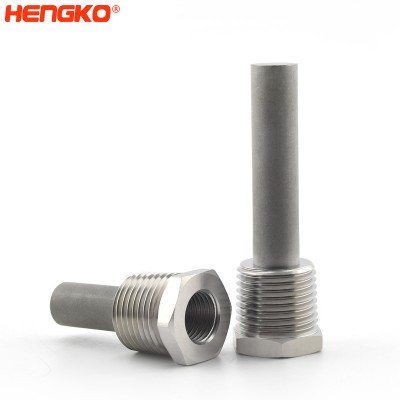
0.5, 2 Micron Oxygenation Stone Brewing Carbonation Aeration Diffusion Stone For DIY Ho...
HENGKO aeration stone is made of the food-grade best stainless steel material 316L, healthier, practical, durable, high temperature resistant, and anti-corr...
View Detail -
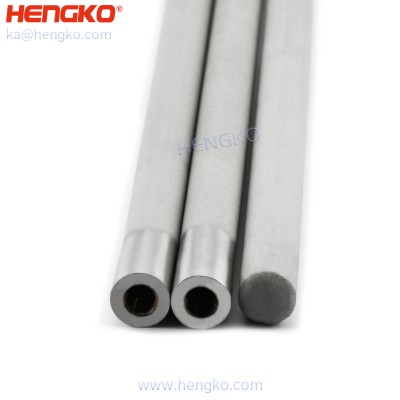
316L stainless steel porous metal straight filter tube shaped sparging assemblies
Sintered air stone diffusers are often used for porous gas injecting. They have different pore sizes(0.5um to 100um) allowing small bubbles to flow through t...
View Detail -
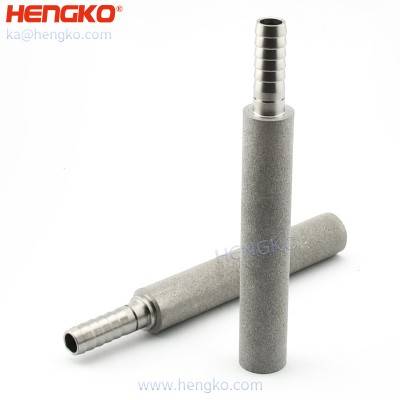
HENGKO 2, 10, 15 microns sintered porous metal stainless steel 316L aeration bubble dif...
This homebrew oxygenation aeration stone can diffuse oxygen into your beer keg for fermentation. It is made of stainless steel, has a strong structure, and h...
View Detail -
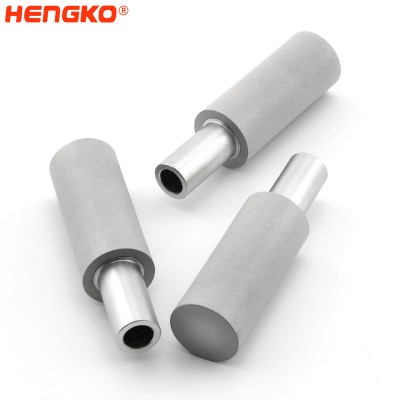
Stainless Diffusion Stone 0.5 2 Micron Oxygen Stone Fitting For Homebrew Wine Beer Tool...
Features: [Premium Quality] Constructed of food-grade material with 304 stainless steel 1/4″ barb to ensure durability, and no rust or leak. [Easy to Use] ...
View Detail -
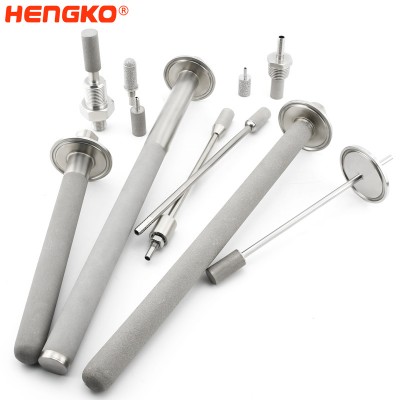
Stainless steel 316l SFC04 home brew 1.5” tri clamp fitting 2 micron diffusion st...
1. Better Than Shaking a Keg! 2. Are you tired of carbonating your beer the unpredictable way? You crank up the PSI in the keg, shake, and wait with ...
View Detail -
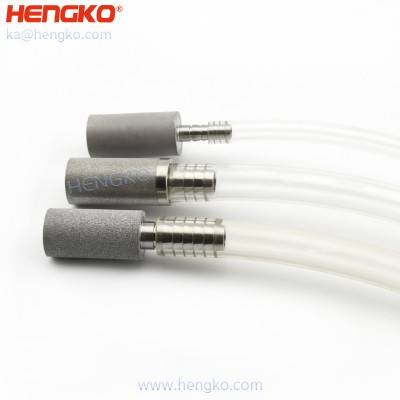
Sintered stainless steel 316L micro air sparger and brewing diffuser carbonation ozone ...
Product Name Specification SFB01 D1/2''*H1-7/8'' 0.5um with 1/4'' Barb SFB02 D1/2''*H1-7/8'' 2um with 1/4'' Barb SFB03 D1/2''*H1-7/8'' 0.5u...
View Detail -
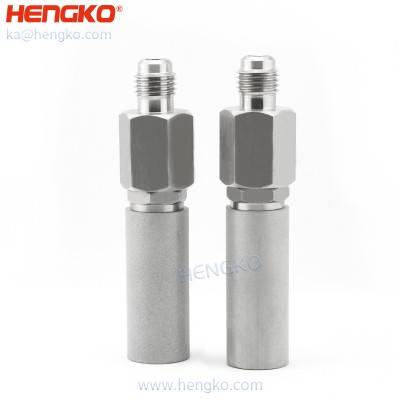
SFT11 SFT12 1/4”MFL wine tool micron diffusion professional oxygenation carbonati...
1. Better Than Shaking a Keg! 2. Are you tired of carbonating your beer the unpredictable way? You crank up the PSI in the keg, shake, and wait with ...
View Detail -
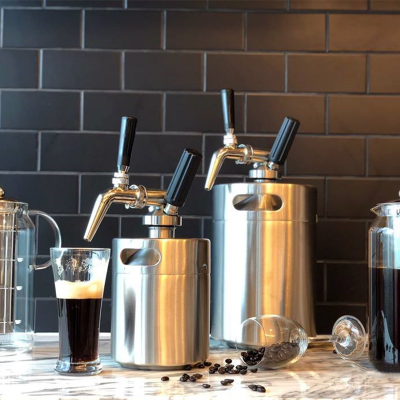
Nitro Cold Brew Nitrogen 0.5 Micron and 2 Micron Diffusion Stone Works with Infusion Ke...
Looking for a better way of infusion your cold brew coffee with nitrogen? You found it! One of the nitrogen-infused coffee hallmarks is that sweet cascade ...
View Detail
Main Feature of Carbonation Stone
As You Know Metal diffusion stones are porous materials that are used to diffuse gases, such as
oxygen or hydrogen, into liquids, such as water or solvents. Here are eight features of metal
diffusion stones:
1. Porous structure: highly porous structure that allows gases to easily diffuse into liquids.
2. High surface area: high surface area, which increases their ability to diffuse gases into liquids.
3. Chemical stability: Chemically stable and can withstand high temperatures and pressures.
4. Easy to clean: Easy to clean and maintain.
5. Long lifespan: Long lifespan and can be used for many cycles before needing to be replaced.
6. Customization: Can be customized to meet specific needs, such as different pore sizes or shapes.
7. Versatility: Can be used in a variety of applications, including water treatment, chemical reactions,
and gas-liquid mass transfer.
8. Durability: Durable and can withstand harsh conditions, making them suitable for use in industrial settings.
Why Work with HENGKO
HENGKO is a leading provider of Diffusion Stone for a range of industries, including aquaculture, hydroponics, and water treatment. With over a decade of experience in the field, we have developed a reputation for producing top-quality Diffusion Stone that meets the needs of our customers.
Our team of skilled professionals is dedicated to providing the highest level of service to our clients. We use advanced equipment and techniques in our production process to ensure that our Diffusion Stone meets the highest standards of quality and performance. We are also committed to sustainability, using environmentally-friendly materials and processes in our production.
In addition to our focus on quality and sustainability, we also place a strong emphasis on customer satisfaction. We work closely with our clients to understand their needs and tailor our products to meet their specific requirements. We are always looking for ways to improve and innovate, and we are open to exploring new opportunities for collaboration.
Whether you are a business looking for a reliable supplier of Diffusion Stone or an individual seeking a partner for your project, we would be happy to discuss your needs and explore potential opportunities for working together. Contact us today to learn more about what we can offer.
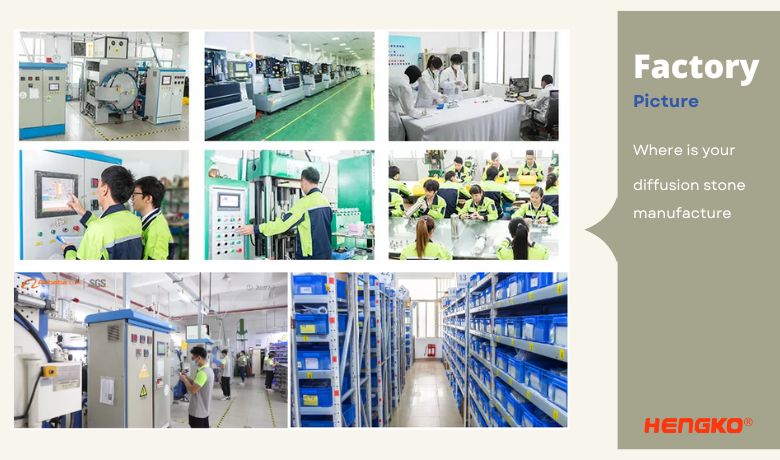
6 Tips You Should Confirm When Custom Your Own Diffusion Stone
Here are six tips to consider when customizing your own diffusion stone:
1. Determine the Gas and Liquid you will be using:
Different gases and liquids have different properties, so it's important to consider these when designing your diffusion stone. For example, if you are using a gas with a high solubility in the liquid, you may need a larger or more porous stone to achieve the desired level of diffusion.
2. Consider the Size and Shape of the Stone:
The size and shape of the stone will affect its performance and the rate of diffusion. A larger stone with a greater surface area may provide more efficient diffusion, but it may also be more difficult to clean and maintain.
3. Choose the Material for the Stone Carefully:
Different materials have different properties that can affect the performance of the stone. For example, stainless steel is durable and resistant to corrosion, but it may be more expensive than other materials. Plastic may be cheaper, but it may not be as durable or resistant to high temperatures.
4. Decide on the Pore Size:
The pore size of the stone will affect the size of the bubbles that are released, which can impact the rate of diffusion. Smaller pores may release smaller bubbles, which may be more efficient at diffusing the gas into the liquid, but they may also be more prone to clogging.
5. Think About the Flow Rate:
The flow rate of the liquid and gas through the stone will affect the rate of diffusion. A higher flow rate may provide more efficient diffusion, but it may also increase the risk of clogging or damage to the stone.
6. Consider the Cost and Maintenance:
Customizing your own diffusion stone can be a cost-effective solution, but it's important to consider the ongoing maintenance and replacement costs. Make sure to factor in the cost of materials, labor, and any additional equipment or supplies needed to create and maintain the stone.
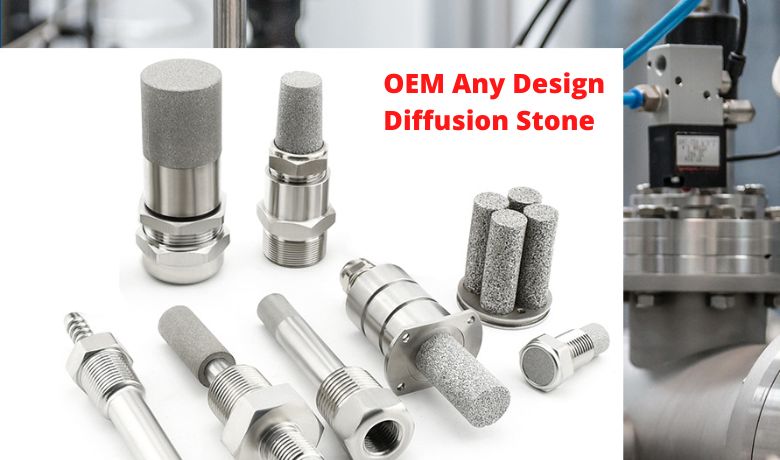
Frequently Asked Questions of Diffusion Stone
1. What is a diffusion stone and how does it work?
A diffusion stone is a small, porous device used to introduce gases into liquids. They are often used in brewing and fermentation processes to oxygenate wort or add carbon dioxide to beer. Diffusion stones work by releasing tiny bubbles of gas into the liquid, which then disperse throughout the liquid and dissolve into it. This allows the gas to be evenly distributed throughout the liquid, ensuring that all parts of the liquid are exposed to the gas.
2. How do I use a carbonation stone to carbonate my beer?
To use a carbonation stone to carbonate your beer, you will need a keg or other container to hold the beer, a CO2 tank and regulator, and a source of pressurized gas (usually CO2). First, make sure your keg and carbonation stone are clean and sanitized. Next, attach the CO2 tank and regulator to the keg, and set the pressure to the desired level (usually between 10-30 psi). Then, connect the carbonation stone to the gas inlet of the keg using a gas line. Turn on the CO2 and allow the gas to flow through the carbonation stone and into the beer. After a few days, the beer should be fully carbonated.
3. Can I use a carb stone to carbonate other types of beverages besides beer?
Yes, you can use a carb stone to carbonate other types of beverages besides beer. The process is generally the same as carbonating beer, but you may need to adjust the pressure and carbonation time based on the specific beverage and desired level of carbonation.
4. What is the difference between a SS Brewtech carb stone and other carbonation stones on the market?
SS Brewtech is a well-known manufacturer of brewing equipment, including carbonation stones. SS Brewtech carb stones are made from high-quality stainless steel, which is durable and resistant to corrosion. They may also be designed with specific features, such as a fine mesh filter, that are intended to improve the performance of the stone. Other carbonation stones on the market may be made from different materials, such as plastic, and may not have the same level of durability or performance as SS Brewtech carb stones.
5. How do I properly clean and sanitize my carbonation stone?
To clean and sanitize your carbonation stone, first remove it from your keg or fermenter and rinse it thoroughly with hot water. Next, soak the stone in a solution of hot water and a brewing sanitizer, such as Star San or iodine-based sanitizers. Allow the stone to soak for at least a few minutes, then rinse it with hot water again. Be sure to clean and sanitize the stone every time you use it to prevent contamination of your beer or other beverages.
6. Can I use an inline carbonation stone in my keg system?
Yes, you can use an inline carbonation stone in your keg system. Inline carbonation stones are designed to be used in a keg system, where they are connected directly to the gas line that supplies pressurized gas to the keg. To use an inline carbonation stone, simply attach it to the gas line and turn on the gas. The stone will release small bubbles of gas into the beer as it flows through the keg, allowing it to be evenly carbonated.
7. Is a stainless steel carbonation stone better than a plastic one?
Stainless steel carbonation stones are generally considered to be better than plastic ones because they are more durable and resistant to corrosion. Plastic carbonation stones may break or become damaged over time, which can lead to contamination of the beer or other beverage. Stainless steel carbonation stones are also more resistant to high temperatures and are easier to clean and sanitize.
8. Can I use a stainless steel aeration stone to oxygenate my wort during the brewing process?
Yes, you can use a stainless steel aeration stone to oxygenate your wort during the brewing process. Aeration stones work by releasing small bubbles of air into the wort, which helps to promote healthy yeast growth and fermentation. To use an aeration stone, simply attach it to an air pump and immerse it in the wort. Turn on the air pump and allow the stone to release bubbles into the wort for a few minutes. Make sure to oxygenate the wort as close to the beginning of the fermentation process as possible, as oxygen is important for healthy yeast growth.
9. What is the purpose of a 2 micron diffusion stone?
2 micron diffusion stone is a type of diffusion stone that has very small pores, usually around 2 microns in size. This makes the stone capable of releasing very small bubbles of gas, which can be beneficial in certain situations. For example, a 2 micron diffusion stone may be used in situations where a high level of oxygenation is required, such as in the production of mead or cider. It may also be used to add carbon dioxide to beer or other beverages in a very controlled and precise manner.
10. How do I install a carbonation stone in my fermenter or keg?
To install a carbonation stone in your fermenter or keg, you will need to attach it to the gas inlet using a gas line. Make sure the stone is clean and sanitized before installing it. To attach the stone to the gas inlet, simply screw it onto the inlet using a hose clamp or other fastening method. If you are using a keg, you may also need to attach the stone to the gas line leading to the keg.
11. Can I use a carbonation stone to force carbonate my beer instead of using a CO2 tank?
Yes, you can use a carbonation stone to force carbonate your beer instead of using a CO2 tank. The process is generally the same as using a CO2 tank, except that you will need to find a source of pressurized gas other than CO2. Some options for pressurized gas include compressed air, nitrogen, or a blend of gases. Be aware that using a gas other than CO2 may affect the taste and appearance of the beer, so it is important to choose a gas that is appropriate for the style of beer you are brewing.
12. How do I know when it's time to replace my carbonation stone?
It is generally recommended to replace your carbonation stone every 6-12 months, or whenever it becomes damaged or clogged. Signs that it may be time to replace your carbonation stone include decreased performance, difficulty maintaining proper carbonation levels, or visible signs of damage or wear.
13. Can I use a carbonation stone to carbonate hard cider or other non-alcoholic beverages?
Yes, you can use a carbonation stone to carbonate hard cider or other non-alcoholic beverages. The process is generally the same as carbonating beer, but you may need to adjust the pressure and carbonation time based on the specific beverage and desired level of carbonation.
14. How do I properly store my carbonation stone when it's not in use?
When storing your carbonation stone, it is important to keep it clean and dry to prevent contamination. After cleaning and sanitizing the stone, allow it to dry completely before storing it. You can store the stone in a dry, airtight container or bag to protect it from moisture and contaminants.
15. Is it safe to use a carbonation stone with food-grade CO2?
Yes, it is generally safe to use a carbonation stone with food-grade CO2. CO2 is a commonly used gas in the food and beverage industry, and it is generally considered safe for use in brewing and fermentation processes. However, it is important to follow proper safety guidelines when handling CO2, such as wearing protective gear and avoiding inhaling large amounts of the gas.
Always, some people get confuse on air diffuser and air stone, so what is difference, air diffuser vs air stone ?
you can check above link to know details. Then if still have more questions for the Carbonation Stone,
please feel free to contact us by follow contact form, also you are welcome to send by email by ka@hengko.com
